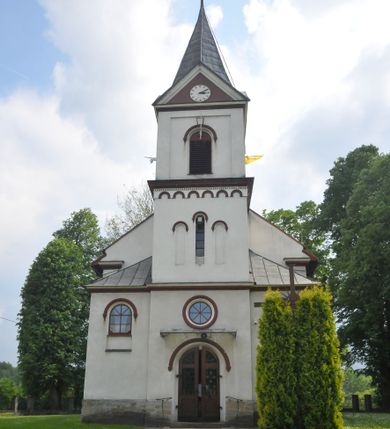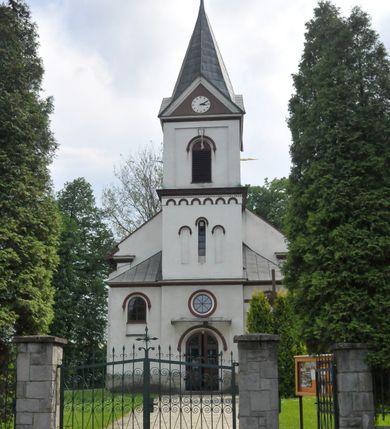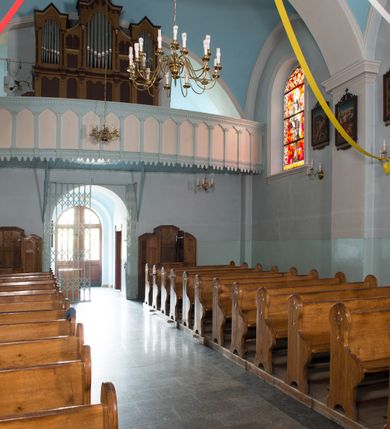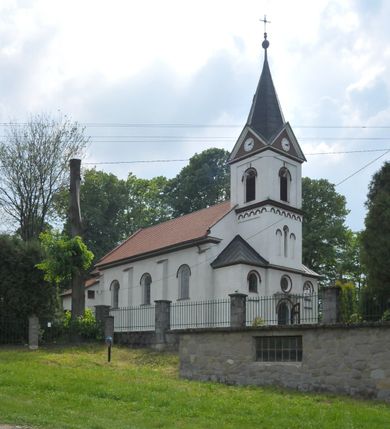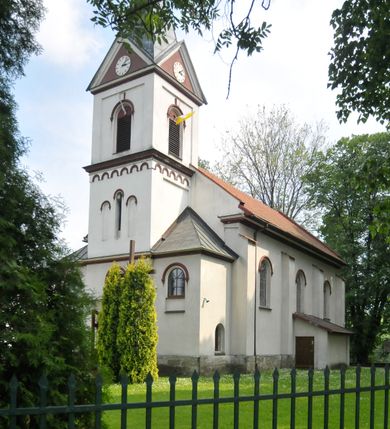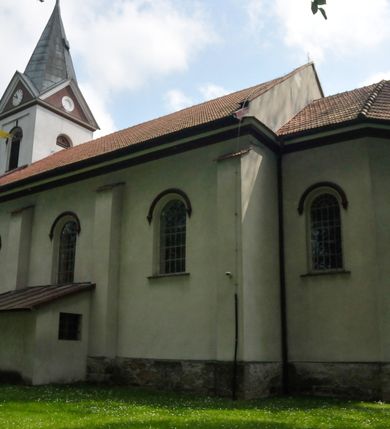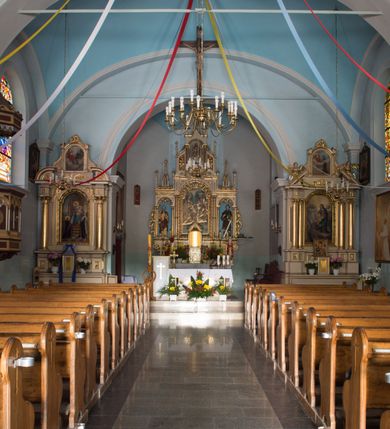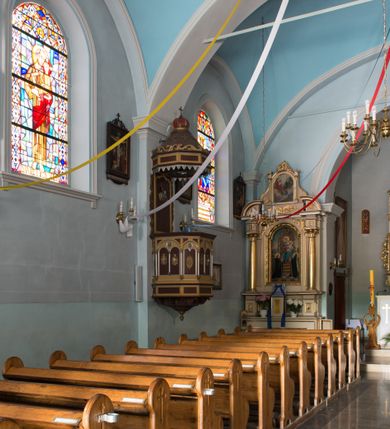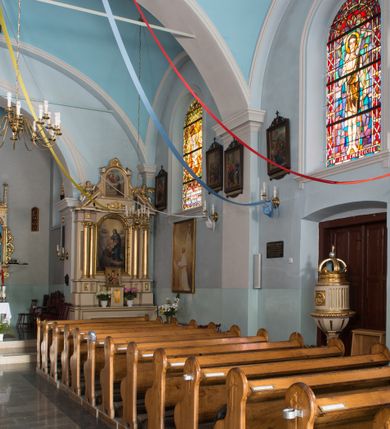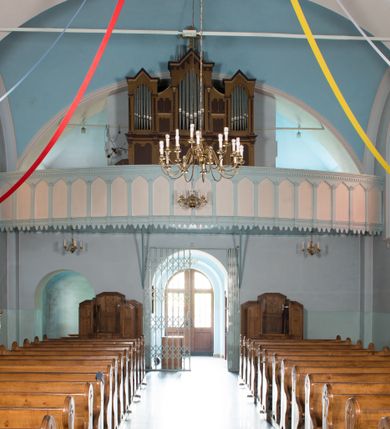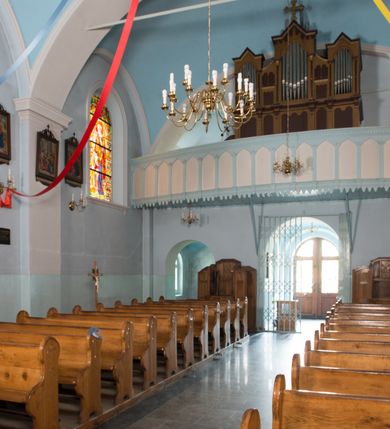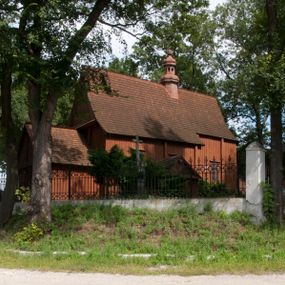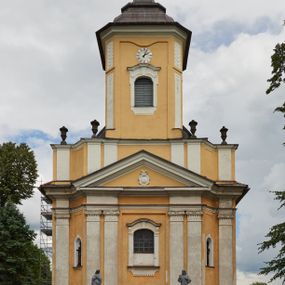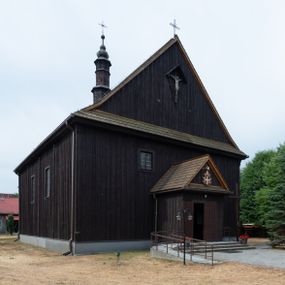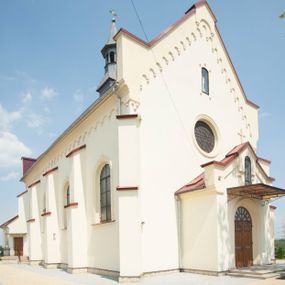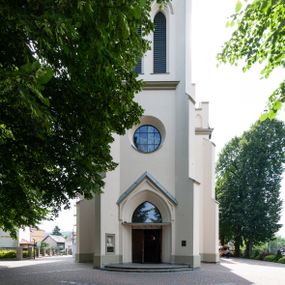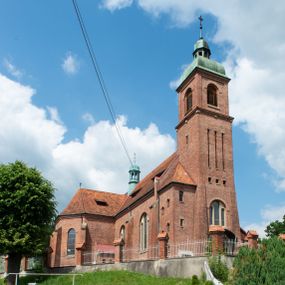
Saint Joseph the Worker church in Łękawica
Identifier
DZIELO/12531
Catalogue note author
Maria Działo
History of work
The parish in Łękawica was erected in 1908, shortly after the new church was built in 1902-1903. The temple was erected in the place of the masonry chapel from 1659, commissioned by Hieronim Przerębski. Józef Łepkowski mentions the Saint Adalbert chapel in Łękawica in 1863. Apparently, the chapel had been built to commemorate the saint bishop's stay in the area. The question of whether this was the same chapel, or what the more recent history of the church in Łękawica was require further investigation, since the history of the temple remains unknown. The new church was consecrated on June 16, 1910 by suffragan Anatol Nowak. The high altar was probably created soon after the temple was built. It was built in the eclectic style, with dominating neo-gothic and neo-renaissance elements. The two side altars can be also dated to this period. The painting of the Holy Family (from 1702) is located in the main area. The trapezoid painting of St. Rosalia, with its concave arms and lower corners, enclosed with a suspended arc, and contained inside a profiled and gilded frame, was brought from the old temple. The painting probably originated in the finial of one of the altar reredoses from the old church in Łękawica. From this church, the bilaterally painted antependium from 1702 with the Grabie blazon and the "FZ CR SR" initials and the Godziebma blazon with the "WZ RR SR 1702", as well the Our Lady of the Snows painting from 1785 were brought to the new temple. The baptismal font and the pulpit belong to the new church furnishing set which was created after the church was built. Among the interesting monuments mentioned in the Catalogue of Art Monuments are also a renaissance picture of St. Mary Magdalene on parchment, altar cross with the figure of Christ Crucified made of ivory created in the seventeenth century, as well as two baroque candle holders.
Abstract
The parish in Łękawica was erected in 1908, shortly after the new church was built in 1902-1903. The temple was erected in the place of the masonry chapel from 1659, commissioned by Hieronim Przerębski. Józef Łepkowski mentions the Saint Adalbert chapel in Łękawicy in 1863. Apparently, the chapel had been built to commemorate the saint bishop's stay in the area. The question of whether this was the same chapel, or what the more recent history of the church in Łękawica was require further investigation, since the history of the temple remains unknown. The new church was consecrated on June 16, 1910 by suffragan Anatol Nowak. The high altar was probably created soon after the temple was built. It was built in the eclectic style, with dominating neo-gothic and neo-renaissance elements. The two side altars can be also dated to this period. The painting of the Holy Family (from 1702) is located in the main area. The trapezoid painting of St. Rosalia, with its concave arms and lower corners, enclosed with a suspended arc, and contained inside a profiled and gilded frame, was brought from the old temple. The painting probably originated in the finial of one of the altar reredoses from the old church in Łękawica. From this church, the bilaterally painted antependium from 1702 with the Grabie blazon and the "FZ CR SR" initials and the Godziebma blazon with the "WZ RR SR 1702", as well the Our Lady of the Snows painting from 1785 were brought to the new temple. The baptismal font and the pulpit belong to the new church furnishing set which was created after the church was built.
Other works from this place
Other works from this year
Similar works
By title
By category
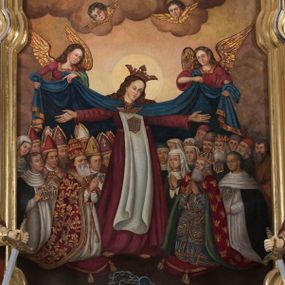
Our Lady of the Redemption of Slaves
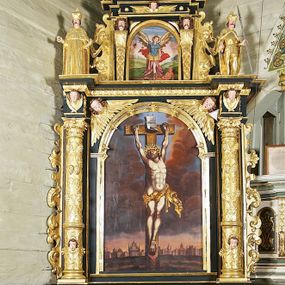
(Left) Northern side altar
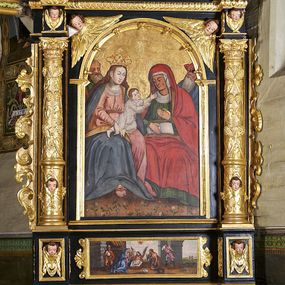
(Right) Southern side altar
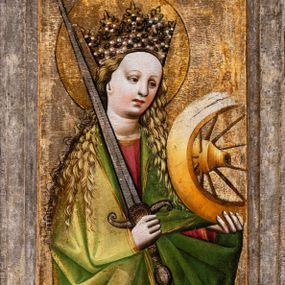
A front left wing of the old triptych of Our Lady of the Immaculate Conception
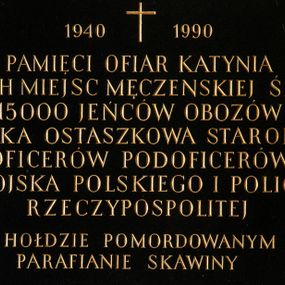
A plaque commemorating the victims of extermination
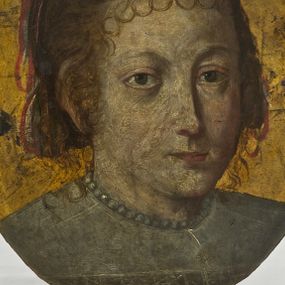
A portrait of Zofia Kochańska of the Swierczewski family
How to cite?
Maria Działo, "Saint Joseph the Worker church in Łękawica", [in:] "The Sacred Lesser Poland Heritage", 2026, source: https://sdm.upjp2.edu.pl/en/works/saint-joseph-the-worker-church-in-lekawica
